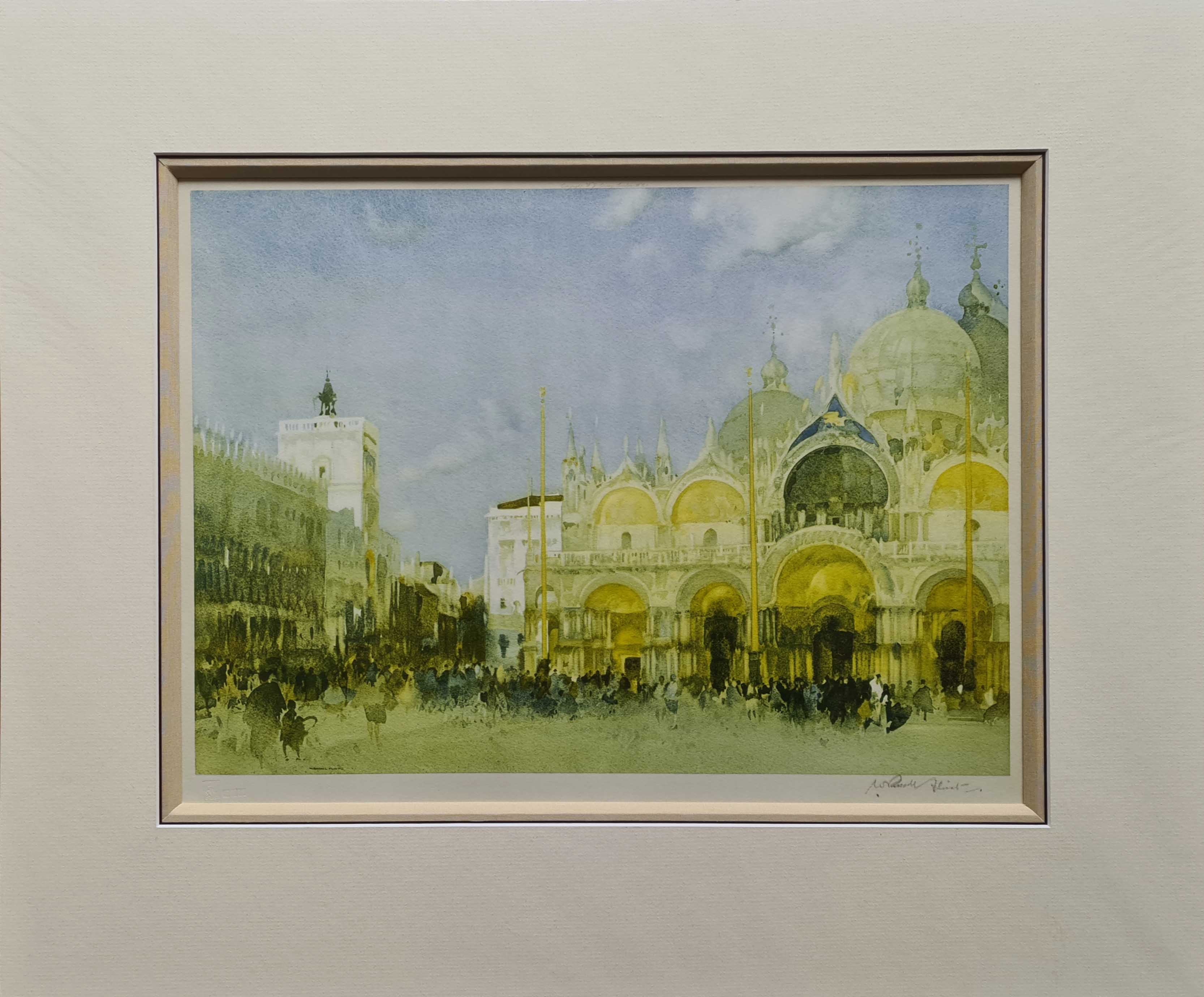St. Mark's Venice
Sir William Russell Flint
P.R.A., P.R.W.S., R.S.W., R.O.I., R.E.

'St. Mark's Venice'
Limited edition of 300
Published 1930
Image Size 14" X 19".
The Basilica di San Marco lies at the eastern side of the Piazza of the same name in the heart of Venice. Until Rustikin's day it was generally criticised
for its "...ill shaped domes; its confused hodgepodge..." Rustkin however, saw "lovely dream, a sea-bourne vase of alabaster, the most magical and mysterious of churches".
The basic structure was certainly a brick built Byzantine basilica completed in the year 1100. During the following centuries, the facade and interior
were clad in marble, and vivid mosaics decorated the lunettes above the main arches. The rail of the gallery is 13th century while the late 14th century
establishments to the pinnacles, upper archivolts and windows traceries are in Gothic style.
The great central window was originally completed with an open stonework screen but was not considered handsome enough. On the summit of the window
arch the statue of St. Mark is by Nicolo Lamberti as are the angels on either side.
In front of the central window and above the main arch are four bronze horses; as fascinating for their travels as their artistic elegance.
Originally gracing Trajan's triumphal arch in Rome - Constantine took them to Constantinople where they remained until that city was sacked
during the Fourth Crusade. They arrived in Venice in 1204 and were eventually placed in their dominating position above the Piazza.
The bases of the three flagpoles in front of St. Marks date from the early sixteenth century. The motifs on the northernly and central poles are
Tritons and Nereids carrying the fruits of the sea on the first, and Justice portrayed with an elephant on the second. The southerly pole shows Neptune receiving a gift of fruit from a Satyr.
Flint must have set up his easel close to the spot where Gentile Bellini had viewed "A Procession in the Piazza San Marco" five centuries before.
Bellini must have seen this beautiful church at the height of its magnificence.
You may be interested to view two of our websites featuring the work of highly regarded wildlife artist, David Shepherd read more
and the signed prints and drawings of Britain's most sought-after artworks by L.S. Lowry read morehere.
Sir William Russell Flint paintings and signed prints for sale.
 01623 799 309
Russell Flint main page
01623 799 309
Russell Flint main page
